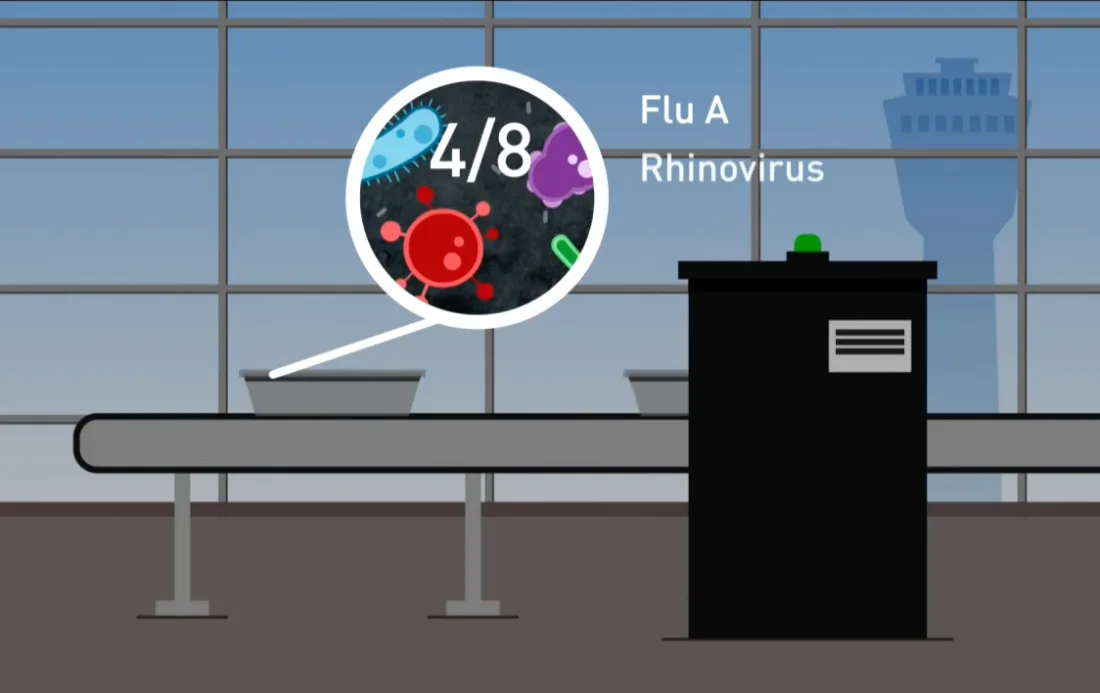
Airport virus hotspots: What to avoid during your next trip
Millions of travellers are passing through airports around the world every day. But with cases of COVID-19 increasing exponentially around the world, what does that mean for airports?
International travel is being closely monitored as the number of those infected with coronavirus climbs and extensive measures in airports are being taken to slow the spread of this illness. The Centers for Disease Control and Prevention says that symptoms of this virus can include fever, cough, and shortness of breath, and occur between two to 14 days after exposure, which means that travellers at an airport can pass through screening even though they are carrying the virus and could become ill, or make others ill.
RELATED: How Canadian weather can impact spread of coronavirus
Given these conditions and the pre-existing knowledge of viral and bacteria hotspots in airports, researchers are rapidly working to investigate which parts of the airport are the most likely to be contaminated with pathogens.
HOW WEATHER COULD IMPACT THE SPREAD OF CORONAVIRUS:
A study that was published in 2018 investigated Finland’s main airport, Helsinki-Vantaa, and sampled typical places where traces of the flu or viruses would be expected to determine which pathogen hotspots we should be most concerned about.
Many might suspect that bathrooms would be the riskiest zone for viruses, but interestingly all 14 of the samples taken from toilet bowl lid and the flushing button had zero positive results for respiratory viruses. Other areas that had zero positive results include the trolley handles for luggage, the buttons of an elevator, and the touch screen on the check-in machine.
A place that had one of the highest rate of contaminated samples was the children’s play area, where 66 per cent of the samples tested positive for rhinovirus and adenovirus. Interestingly, the security checkpoint where people place their belongings into trays to be scanned tested as the most contaminated place in the airport.
The researchers suggest that security trays are the most contaminated airport surface in this study because it is an obligatory step for all departing passengers and each tray is continuously touched by several hundred passengers each day. They also suggest that the trays are so highly contaminated because, to their knowledge, they are not routinely disinfected, unlike bathrooms that are diligently cleaned frequently.
While swabs of surfaces had the highest rates of contamination, the air samples were not free of pathogens, as 25 per cent of them tested positive for adenovirus.
Knowledge of pathogen hotspots in airports allows for improved public health measures when there is an outbreak and the researchers say that specific measures should be taken when an emerging pandemic threat is identified. This includes addressing passenger distancing in order to reduce transmission at close proximity (i.e. droplet transmission from a person sneezing next to you), increased promotion of hand hygiene and respiratory etiquette, arriving traveller screening procedures, and increased ventilation within the airport to lower the concentration of pathogens.
The recent outbreak of coronavirus is top of mind amongst many Canadians as there are currently three confirmed cases in Ontario and one in British Columbia, according to the Government of Canada. Despite the alarming coverage, the risk is low within Canada and that the most important method of prevention is good hygiene practices, says Victor Wong in an interview with The Weather Network.
Tips on how to prevent infection include:
Wash hands with soap for 20 seconds.
Use alcohol-based hand sanitizer if soap and water are not available.
Cough and sneeze into a tissue and throw it out.
If you don’t have a tissue, cough and sneeze into your sleeve.
Don’t touch your face with your hands.
Other resources that have updated information regarding the spread of illness include Health Canada, CDC, and the WHO.










